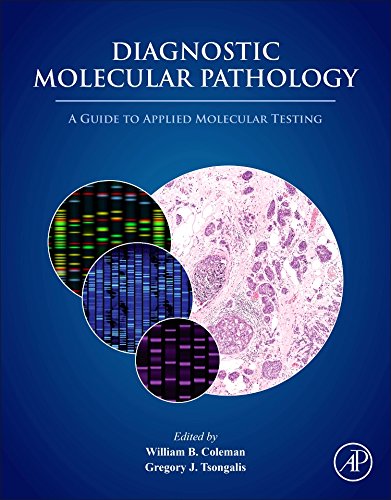

Most ebook files are in PDF format, so you can easily read them using various software such as Foxit Reader or directly on the Google Chrome browser.
Some ebook files are released by publishers in other formats such as .awz, .mobi, .epub, .fb2, etc. You may need to install specific software to read these formats on mobile/PC, such as Calibre.
Please read the tutorial at this link. https://ebooknice.com/page/post?id=faq
We offer FREE conversion to the popular formats you request; however, this may take some time. Therefore, right after payment, please email us, and we will try to provide the service as quickly as possible.
For some exceptional file formats or broken links (if any), please refrain from opening any disputes. Instead, email us first, and we will try to assist within a maximum of 6 hours.
EbookNice Team

Status:
Available5.0
22 reviewsDiagnostic Molecular Pathology: A Guide to Applied Molecular Testing is organized around disease types (genetic disease, infectious disease, neoplastic disease, among others). In each section, the authors provide background on disease mechanisms and describe how laboratory testing is built on knowledge of these mechanisms. Sections are dedicated to general methodologies employed in testing (to convey the concepts reflected in the methods), and specific description of how these methods can be applied and are applied to specific diseases are described.
The book does not present molecular methods in isolation, but considers how other evidence (symptoms, radiology or other imaging, or other clinical tests) is used to guide the selection of molecular tests or how these other data are used in conjunction with molecular tests to make diagnoses (or otherwise contribute to clinical workup). In addition, final chapters look to the future (new technologies, new approaches) of applied molecular pathology and how discovery-based research will yield new and useful biomarkers and tests.
Diagnostic Molecular Pathology: A Guide to Applied Molecular Testing contains exercises to test readers on their understanding of how molecular diagnostic tests are utilized and the value of the information that can be obtained in the context of the patient workup. Readers are directed to an ancillary website that contains supplementary materials in the form of exercises where decision trees can be employed to simulate actual clinical decisions.